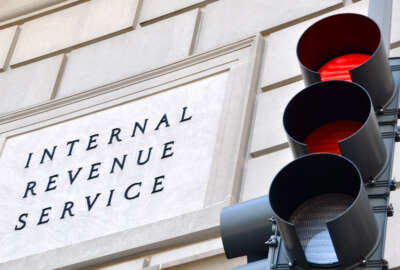First Look
Lawmakers to seek GAO review of TSA’s biometrics, facial recognition use
TSA has expanded its use of facial recognition technology to more than 80 airports across the country in recent years.
EDITOR’S NOTE: A previous version of this story incorrectly stated Green and Gimenez had already sent the letter to GAO. As of Jan. 9, the letter is still a draft, a spokeswoman for Green clarified to Federal News Network.
Top House lawmakers are eyeing a Government Accountability Office review of the Transportation Security Administration’s growing use of artificial intelligence and biometric technologies, including facial recognition.
House Homeland Security Committee Chairman Mark Green (R-Tenn.) and Rep. Carlos Gimenez (R-Fl.), chairman of the homeland security committee’s transportation and maritime security subcommittee, are drafting a letter to GAO on the topic. Federal News Network obtained a draft copy of the letter. It comes as TSA has been steadily expanding its use of facial recognition at airport screening checkpoints in recent years.
“TSA must prioritize funding for emerging technology, effectively partner with the private sector, and safeguard the privacy of Americans as it works to modernize the airport screening experience,” Green said in a statement provided to Federal News Network. “The traveling public and TSA employees deserve nothing less. We hope the GAO will provide the committee with a thorough review of the agency’s investments to ensure it can accomplish its no-fail homeland security mission amid evolving threats to air travel.”
Green and Gimenez will ask GAO to specifically review the overall cost savings from TSA deploying biometric systems at airports compared to the costs of deploying more personnel.
They also want to know how biometrics and AI are helping improve TSA’s “operational efficiency” at airport screening checkpoints. TSA officials say the agency’s use of facial recognition at some airports has improved passenger processing times and checkpoint throughput without the need for additional staff.
GAO should also review the “specific privacy and data protection policies,” the lawmakers write in the draft letter. That includes whether the policies sufficiently address the potential for data breaches or the misuse of biometric data.
Green and Gimenez want GAO to consider how TSA’s use of biometrics and AI compare to that of other U.S. agencies, such as Customs and Border Protection, and international transportation security agencies.
And GAO should also review the “projected long-term costs and benefits of expanding biometric and AI technologies across all TSA checkpoints,” as well as whether TSA has a plan “to monitor and evaluate the return on investment over time to ensure sustained cost-effectiveness and operational improvements,” the lawmakers write.
TSA use of facial recognition expanding
TSA started deploying facial recognition to select airports in 2022. The agency has been using the technology to match a person’s face to the ID they provide at airport screening checkpoints.
The face matching technology is featured in TSA’s second-generation Credential Authentication Technology, or CAT-2, devices. In a recent update posted to its website, TSA reports the CAT-2 devices are installed at 84 airports across the country. The agency plans to expand the devices to more than 400 federalized airports in the coming years.
During a Dec. 2022 appearance at the Aspen Institute, TSA Administrator David Pekoske said facial recognition algorithms are more accurate and faster compared to humans in matching IDs to faces. He said TSA would put strong privacy protections in place , such as deleting images of travelers once they leave the checkpoint. TSA also says travelers can opt out of using the facial recognition check.
“The reality is we have no desire to retain a facial image,” Pekoske said. “Once your facial image is checked biometrically, that’s erased as soon as you leave that station and the checkpoint.”
Still, some lawmakers have pushed back on TSA’s expanding use of facial recognition.
In a Nov. 2024 letter, 12 senators from both parties asked the DHS inspector general to audit TSA’s facial recognition program. They argued TSA hasn’t demonstrated the efficacy of the technology.
They also said opting out of TSA’s face matching verification is “confusing and intimidating.”
“This technology will soon be in use at hundreds of major and mid-size airports without an independent evaluation of the technology’s precision or an audit of whether there are sufficient safeguards in place to protect passenger privacy,” the senators wrote.
Beyond facial recognition, TSA is widely exploring the use of artificial intelligence, including to aid with luggage screening.
During an April 2024 House Appropriations Committee hearing, Pekoske said TSA’s X-ray machines can automatically detect explosives. But he said the agency is testing out whether AI can detect a wider range of prohibited items hidden in bags.
“What it doesn’t do is it doesn’t automatically detect all the other things that we don’t allow through the screening process, like firearms, parts of firearms, ammunition, all kinds of knives, throwing stars, cat eyes, et cetera,” Pekoske said. “And so we’re using artificial intelligence to train the technology to detect all the prohibited items.”
Copyright © 2025 Federal News Network. All rights reserved. This website is not intended for users located within the European Economic Area.
Follow @jdoubledayWFED






